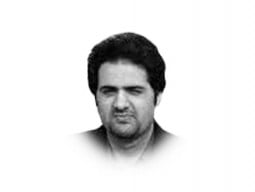However, Pakistan remains one of the least connected countries (LCCs) and ranks 142 on a global ICT index of 166 economies, the International Telecommunications Union (ITU) reveals in its latest report.
“Over three billion people are now online and information and communication technology growth remains buoyant in just about every country worldwide,” says ITU’s flagship annual report “Measuring the Information Society” (MIS).

The report is widely recognised as the repository of the world’s most reliable and impartial data and analysis on the state of global ICT development, ITU says on its website. “It is extensively relied upon by governments, financial institutions and private sector analysts worldwide.”
In 2014, the use of internet, across the globe, grew 6.6% year-on-year, according to the data released by ITU. Developed countries witnessed a growth of 3.3% while the developing world recorded 8.7% growth.
“The number of internet users in developing countries has doubled between 2009 and 2014, with two-thirds of all people online now living in the developing world,” the report said. Of the 4.3 billion, who are still offline, 90% live in developing countries, such as Pakistan.
Access to ICT remains largely out of reach, particularly for the large rural populations of the 42 least connected economies, which are home to 2.5 billion people, the report says. The findings clearly reflect Pakistan’s current situation.
Many international surveys and the country’s telecom regulator estimate that over 80% of Pakistan’s population is still offline. The country had 3.6 million broadband subscriptions as of April 2014, translating to roughly 23 million users or 12% of the population if average household size is 6.5.

Not surprisingly, Pakistan ranked 142 in the 2013 edition of the ICT Development Index (IDI), the ITU’s measure of the level of ICT developments in 166 economies worldwide. The country ranked 141 in the IDI of 2012.
The poor ranking was driven by the country’s low growth rate. The index categorised economies with a growth rate of 2.78% or below as LCCs while Pakistan’s IDI growth of 2013 was even lower. The latest edition of the ITU report put the country’s growth at 2.05%, slightly up from 2.01% of 2012. Though the statistics certainly don’t paint a good picture for the country, things are likely to improve in the future, according to industry experts.
“Data for such reports is collected about six months ago, it, therefore, may not reflect the impact of the third-generation (3G) mobile broadband technology,” ICT expert Parvez Iftikhar said referring to the auction of 3G mobile spectrum held in April this year.

The former managing director of Universal Services Fund (USF), however, added that the country didn’t implement rural projects on a fast-track basis, which could improve internet access in rural areas.
“Pakistan has been losing its position on this index for the past five years, which is very disappointing,” Iftikhar said of the country’s ranking on the MIS report. “Unless we lay down a network of fibre optic in rural areas and connect it to the mobile infrastructure [mobile towers], we can’t improve the overall internet access in the country,” he said, noting more than 60% of the country’s population lives in rural areas.
Responding to a question, Iftikhar said the funds available with the USF – an independent government body meant to promote development of ICT infrastructure in un-served and underserved areas – are more than enough to cover the cost of this fibre optic network.
The USF had Rs64 billion in its account when the new government came to power, he said. Given the ICT industry continues to provide funds for the USF, there should be close to Rs70 billion in its kitty as of now, he said.
Published in The Express Tribune, December 1st, 2014.
Like Business on Facebook, follow @TribuneBiz on Twitter to stay informed and join in the conversation.
COMMENTS (3)
Comments are moderated and generally will be posted if they are on-topic and not abusive.
For more information, please see our Comments FAQ
1720097164-0/BeFunky-collage-(9)1720097164-0-405x300.webp)


1734567485-0/Untitled-design-(54)1734567485-0-165x106.webp)
1734565405-0/Faze-(1)1734565405-0-165x106.webp)

1722065362-0/BeFunky-collage]-(56)1722065362-0-270x192.webp)










Here's how our neighbors rank; China 86. India 129. Iran 94 and Afghanistan 155. As you can see, Chinese are clearly trying to break away from the status of a 3rd world nation. The rest, well, they are all highly corrupt governments who have no interests in furthering a common man's quality of life.
@khazana: The money is still in the books of USF and belongs to it. It does not have to be there physically.
There is no money in the USF. USF funds were used to bridge the fiscal defict back in the 2013 when the new government made their first budget.